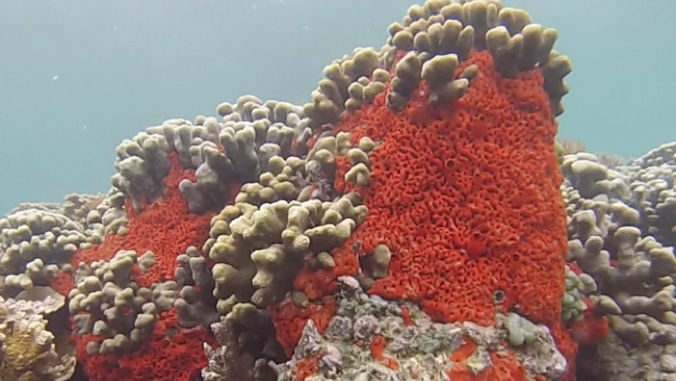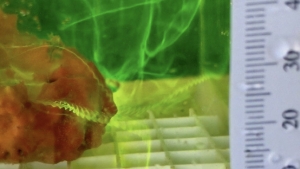
Marine sponges in Kāneʻohe Bay have a unique feeding strategy: They acquire important components of their diet from bacteria living within their own bodies.
In research led by doctoral student Joy Leilei Shih in the School of Ocean and Earth Science and Technology at the University of Hawaiʻi at Mānoa, a new application of a technique that relies on naturally occurring stable isotopes was utilized to examine the diet of M. grandis sponges collected from Kāneʻohe Bay. The study found that amino acids, the building blocks of proteins in tissues, came from microbes living within the sponge itself.
The importance of marine sponge research

Coral reefs are one of Hawaiʻi’s most important natural resources and support fisheries and the state’s economy. Marine sponges are key components of coral reef ecosystems. The invasive Indo-Australian sponge Mycale grandis was first documented in the islands in the late 1990s. M. grandis is now found in and near major harbors of the main Hawaiian Islands as well as within Kāneʻohe Bay.
Shih and colleagues found the diet of M. grandis did not originate from photosynthesizing microbes (as seen in corals), and feeding did not follow general patterns of other multicellular animals. Instead, the isotopic patterns of the sponge and its symbiotic microbes were not different from one another, indicating the sponge obtains nutrition through the uptake of amino acids originating from their symbiotic microbes.
“While we knew that the symbionts of sponges play an important role in their diet, the mechanism by which it occurred was unknown,” said Shih. “The only way to produce the observed amino acid isotopic pattern, or fingerprint, if you will, is through the direct transfer of amino acids from their symbiotic bacteria.”
Added Chris Wall, a UH Mānoa postdoctoral researcher and study co-author, “The patterns we detected in M. grandis and its symbionts are very interesting, as they suggest sponges may be actively capturing materials in seawater to support the needs of their microbial community, which in turn supply the sponge with essential tissue building blocks.”
Significance of findings
The researchers’ new approach to investigating sponge feeding strategies can be applied to future research on other marine sponges in Hawaiʻi and elsewhere. Sponges play an important role in the nutrient dynamics of coral reefs and, in the future, they may rise to dominate coral reefs as corals decline due to direct pressure from human activity and climate change.
This work can help policymakers design better informed conservation plans and provide new insights into the biology of sponges that show the importance of marine microbes to the diet of an invasive sponge.

